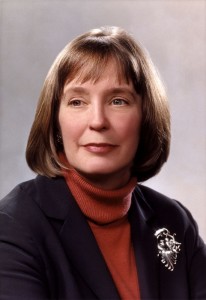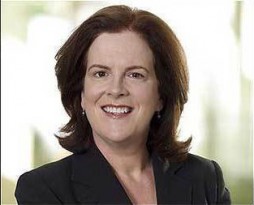Washington’s 100 Most Powerful Women
Three of the Smithsonian’s own have been selected by Washingtonian magazine as among the region’s most powerful women. Elizabeth Broun, Johnnetta Cole and Patricia Stonesifer have built impressive careers and made lasting contributions in art, anthropology, scholarship and philanthropy.
Washington has more women in high places than ever. Here’s how the 100 most powerful got to the top, how they balance career and family, and their advice for young women on the way up.
In almost every part of the public, private, and nonprofit sectors, there’s a deep bench of smart, savvy women who could each be considered one of the top 100. This year, we’ve chosen to recognize those who make things happen in hometown Washington as well as in the nation’s capital.
Elizabeth Broun, The Margaret and Terry Stent Director, Smithsonian American Art Museum
Elizabeth Broun is responsible for the nation’s premier collection of American art and major exhibition, research, publication, education and new media programs.
During her tenure, the museum has become a leader in distance learning, Web-based resources, research databases and new media. In addition, the museum has developed a significant national education program. Broun conceived and secured funding for many of the museum’s core programs and new public spaces—a conservation center, an art storage and study center, an enclosed courtyard and an auditorium—in the museum’s main building, a magnificently renovated National Historic Landmark located in the heart of a revitalized downtown cultural district.
Broun lectures extensively across the United States. Her research interests include contemporary art, 19th-century art, and prints and drawings. Her 1989 exhibition catalog on Albert Pinkham Ryder won the prestigious Alfred H. Barr Award for Distinguished Scholarship. She also has curated exhibitions and published on the art of Thomas Hart Benton, Stuart Davis, Childe Hassam, Patrick Ireland, Pat Steir and James McNeill Whistler.
Broun came to Washington in 1983 as chief curator and assistant director of the museum, following seven years as a curator and interim director at the Spencer Museum of Art, University of Kansas in Lawrence. She has served as director of the Smithsonian American Art Museum and its branch museum, the Renwick Gallery, since August 1989.
Johnnetta Cole, Director, Smithsonian National Museum of African Art
Johnnetta Cole oversees 34 staff members and a collection of 9,100 objects in the only national museum in the United States dedicated to the collection, exhibition, conservation and study of the arts of Africa.
Cole is also the board chair of the Johnnetta B. Cole Global Diversity and Inclusion Institute, founded at Bennett College for Women in Greensboro, N.C. The mission of the nonprofit institute is to create, communicate and continuously support the case for diversity and inclusion in the workplace through education, training, research and publications.
Cole served as president of the Bennett College for Women (2002-2007) where she completed a $50 million campaign, opened an art gallery and initiated programs in Africana women’s studies and global studies. Before that, she served as Presidential Distinguished Professor of Anthropology, Women’s Studies and African American Studies (1998-2001) at Emory University in Atlanta.
Cole was president of Spelman College in Atlanta (1987-1997) where her appointment generated a $20 million gift from Bill and Camille Cosby. In addition, she completed a $113 million capital campaign. Under her leadership, Spelman College was named the number-one ranked liberal arts college in the South.
Cole has served on the Scholarly Advisory Board of the Smithsonian’s National Museum of African American History and Culture since its inception, and she has worked with a number of Smithsonian programs since the mid-1980s.
Patricia Stonesifer, Chair, Smithsonian Board of Regents
Patricia Stonesifer, former chief executive of the Bill and Melinda Gates Foundation, was named in September 2008 the first chair of the Board of Regents, the Smithsonian’s governing body of 17 trustees who are appointed by Congress and include the chief justice of the United States, the vice president, three senators and three representatives, and nine other citizens approved by the board.
Part of Stonesifer’s mission has been stepping up the Smithsonian’s fund-raising. For the first time in its history the Smithsonian has announced a capital campaign to raise more than $1 billion over five to seven years. She joined the Regents in 2001 and was chairwoman of the governance committee, which was established to evaluate the Smithsonian and measure it against the best practices of comparable institutions.
Stonesifer shared the chairmanship of the Gates Foundation with Bill Gates Sr. She will stay on at the Gates foundation — where she has worked for no pay — as a senior advisor to the trustees. She divides her time between what she called “the two Washingtons,” D.C. and Seattle. She and her husband, the political writer Michael Kinsley, have homes in both places.
Stonesifer was chief executive of the Gates Foundation, one of the world’s biggest charities and the largest charitable organization based in the United States, from January 2006 until September 2008 and before that was the foundation’s president and co-chairwoman. The foundation has been a major donor to the worldwide fight against malaria and also supports many education causes.
Born and raised in Indianapolis, the sixth of nine children, Stonesifer graduated from Indiana University in 1982. She was editor in chief at a computer-book publisher in Indianapolis when Microsoft hired her to work in its book division in 1988. Ultimately she led the firm’s interactive media division, where she started MSNBC and the Encarta online research tool. She left to work on new ventures at DreamWorks entertainment company, but was hired back in 1997 by Mr. Gates to start and run his foundation.
Click here for the full Washingtonian article.
Posted: 5 October 2011
- Categories:






